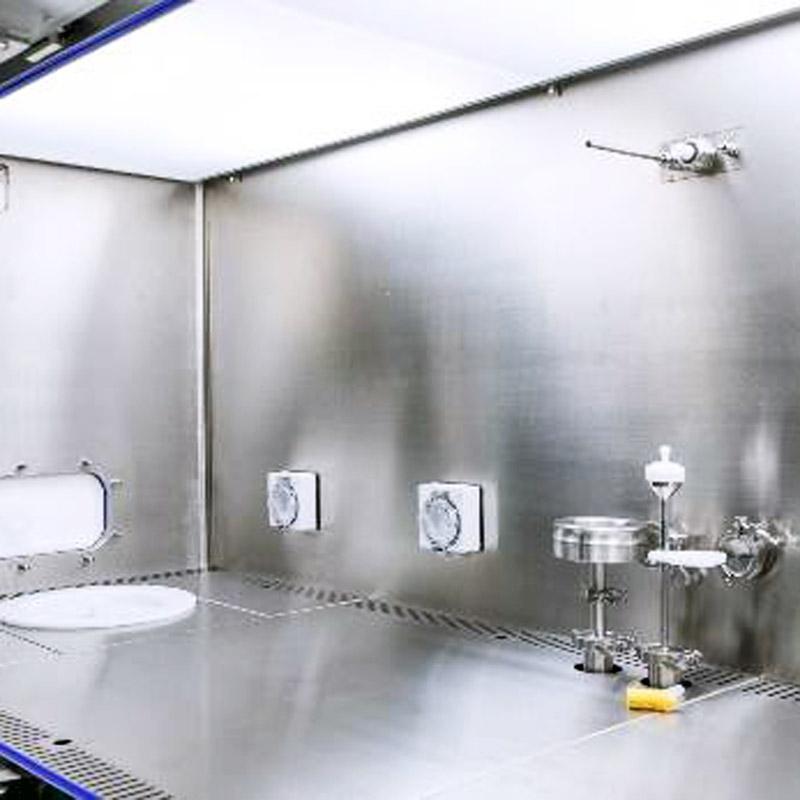
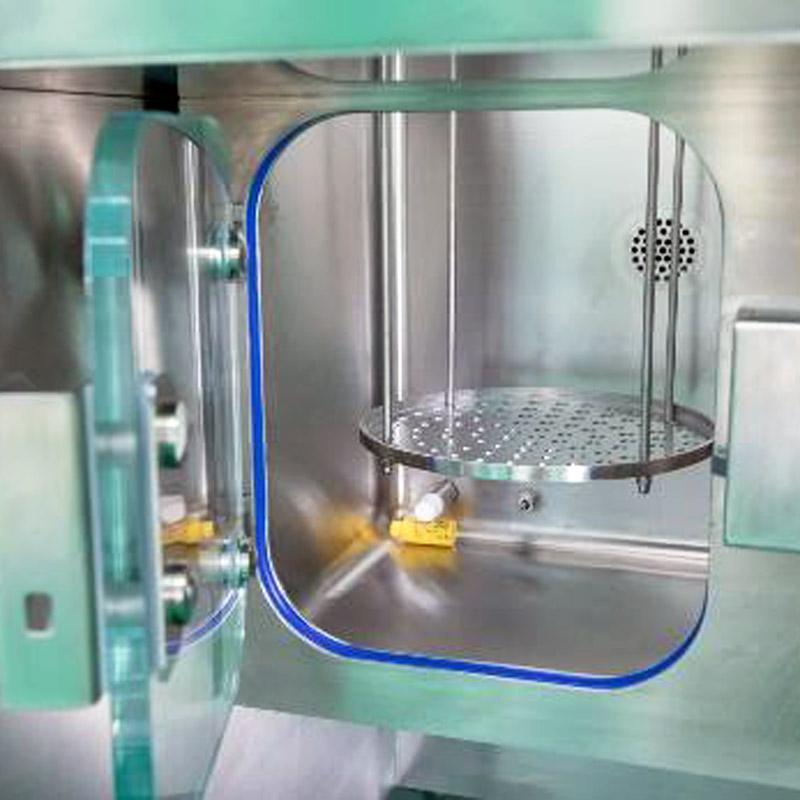
What are Sterility Testing Isolators?
Sterility Testing Isolators are specialized enclosures or chambers designed to provide a controlled and sterile environment for conducting sterility tests on pharmaceutical products, medical devices, and other critical materials. These isolators are essential in maintaining aseptic conditions during the testing process.
The primary purpose of Sterility Testing Isolators is to minimize the risk of contamination and ensure accurate testing results. They create a physical barrier between the operator and the sample being tested, preventing potential contamination from external sources. Isolators are equipped with features such as glove ports and gloves that allow operators to handle the samples without directly exposing them to the surrounding environment.
One of the key components of Sterility Testing Isolators is the high-efficiency particulate air (HEPA) filtration system. HEPA filters remove airborne particles, including microorganisms and other contaminants, from the air inside the isolator. This filtration system helps maintain a clean and sterile testing environment, crucial for accurate and reliable test results.
Additionally, Sterility Testing Isolators may include lighting systems to provide adequate visibility during testing, gas supply systems for specific testing requirements, and control panels for adjusting and monitoring environmental conditions such as temperature, humidity, and pressure.
These isolators play a crucial role in maintaining the integrity and safety of pharmaceutical products, medical devices, and other materials by ensuring that they are free from harmful microorganisms. They comply with regulatory standards, such as FDA guidelines for sterility testing, ISO standards for cleanrooms and isolators, and Good Manufacturing Practice (GMP) requirements, to ensure the reliability of the testing process.
By utilizing Sterility Testing Isolators, companies can confidently assess the sterility of their products, minimize the risk of contamination, and uphold the highest standards of quality and safety.
The Role of Sterility Testing Isolators
Ensuring Aseptic Conditions
Sterility Testing Isolators play a vital role in maintaining aseptic conditions during the testing process. These isolators create a physical barrier between the operator and the sample, preventing any potential contamination. By providing a controlled environment with low particle counts and sterile airflow, isolators minimize the risk of false positive or false negative results caused by environmental contamination.
Minimizing Contamination Risks
Contamination poses a significant challenge in cleanroom environments. Sterility Testing Isolators address this challenge by minimizing the risk of microbial and particulate contamination. The isolators are designed with high-efficiency particulate air (HEPA) filters that remove airborne particles, ensuring a clean and sterile environment for accurate testing.
Protecting Operators and Samples
Operators working with hazardous or sensitive materials are also safeguarded by Sterility Testing Isolators. These enclosures provide a physical barrier between the operator and the sample, reducing the risk of exposure to potentially harmful substances. The isolators are equipped with glove ports and gloves, allowing operators to handle samples inside the isolator without direct contact. This not only protects the operators from contamination but also prevents any cross-contamination between different samples being tested.
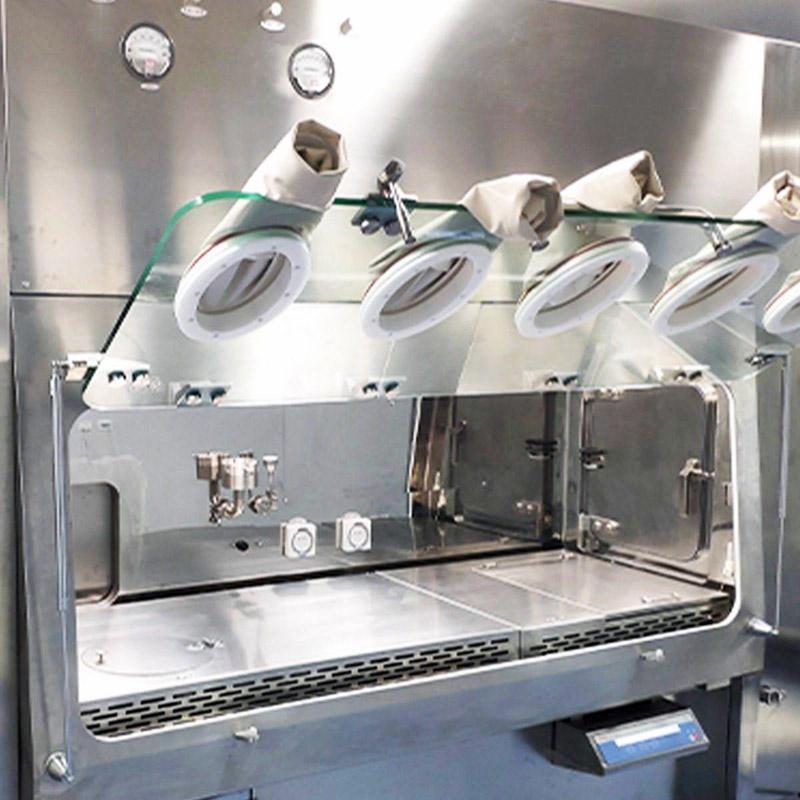
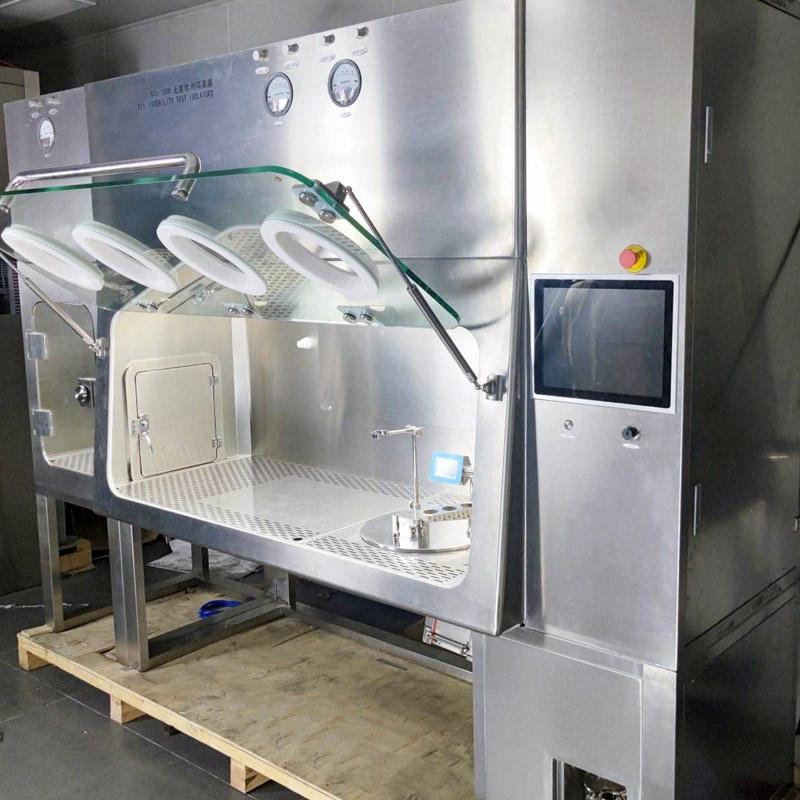
Features and Design of Sterility Testing Isolators
Sterility Testing Isolators are designed with specific features to ensure optimal performance and usability. Let’s explore some of these features:
Positive Pressure Isolators
Positive pressure isolators maintain a higher pressure inside the enclosure compared to the surrounding environment. This positive pressure prevents the entry of contaminants from the outside, creating a clean and controlled environment within the isolator.
Negative Pressure Isolators
Negative pressure isolators operate by maintaining a lower pressure inside the enclosure, drawing air inwards, and filtering it before release. This design prevents the escape of potentially hazardous substances from the isolator, ensuring the safety of both operators and the external environment.
Material Selection for Isolator Construction
The construction materials of Sterility Testing Isolators are carefully chosen to meet stringent cleanliness and sterilization requirements. Typically, materials such as stainless steel or high-grade plastics are used, as they are easy to clean, resistant to corrosion, and compatible with sterilization methods such as hydrogen peroxide vapor or autoclaving.
Airflow Systems and Filtration
Airflow systems are a crucial aspect of Sterility Testing Isolators. These isolators utilize laminar airflow principles, where filtered air is supplied in a unidirectional manner to maintain a clean and controlled environment. HEPA filters are used to remove particles as small as 0.3 micrometers, ensuring a high level of air cleanliness within the isolator.
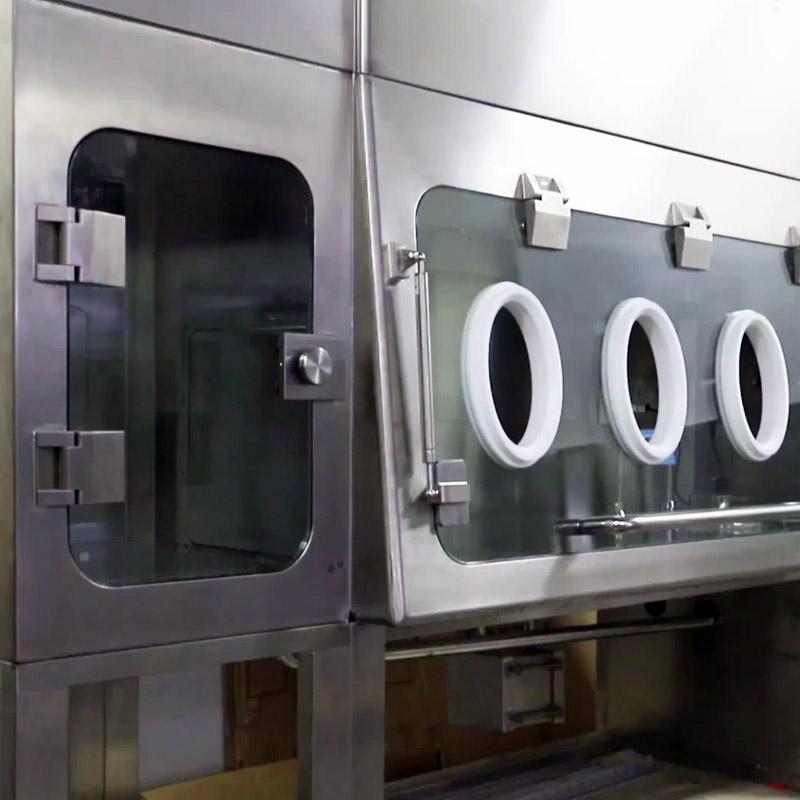
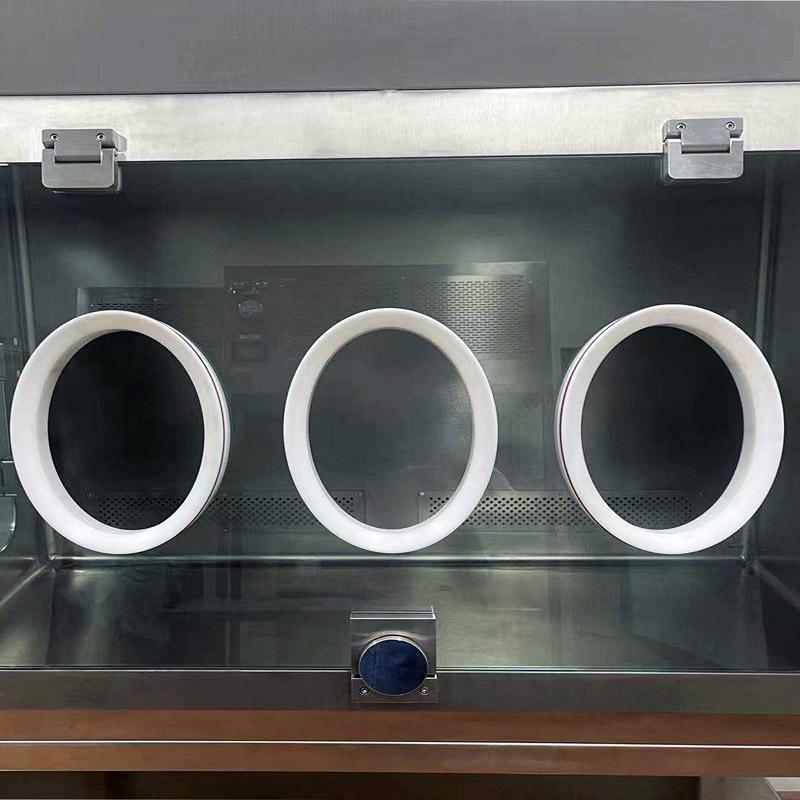
Key Components of Sterility Testing Isolators
Several components contribute to the effective functioning of Sterility Testing Isolators. Let’s explore some of the key components:
Glove Ports and Gloves
Glove ports allow operators to access the inside of the isolator while maintaining a sealed environment. High-quality gloves made of materials such as latex or nitrile are used, providing the necessary dexterity and tactile sensitivity for sample handling and testing.
HEPA Filters
High-efficiency particulate air (HEPA) filters are an essential component of Sterility Testing Isolators. These filters effectively remove airborne particles, including microorganisms, dust, and other contaminants, ensuring a clean and sterile environment within the isolator.
Lighting and Visibility
Proper lighting is crucial for operators to perform accurate and precise testing. Sterility Testing Isolators are equipped with adequate lighting systems, illuminating the work area and providing clear visibility of the samples being tested.
Gas Supply Systems
Some applications may require the use of specific gases, such as nitrogen or carbon dioxide, during the testing process. Sterility Testing Isolators can be equipped with gas supply systems that provide controlled and regulated delivery of these gases, ensuring optimal testing conditions.
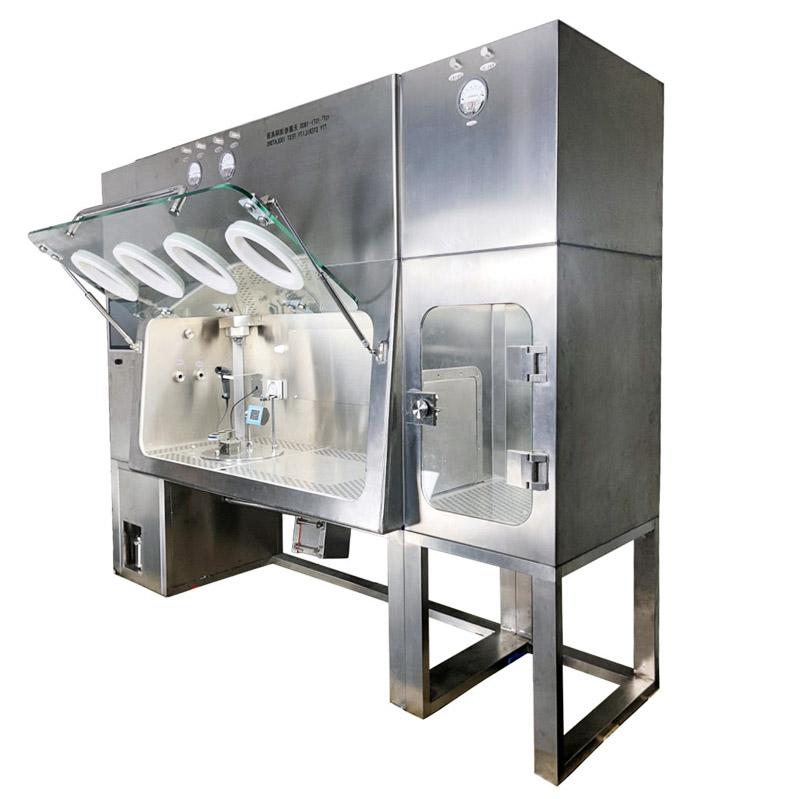
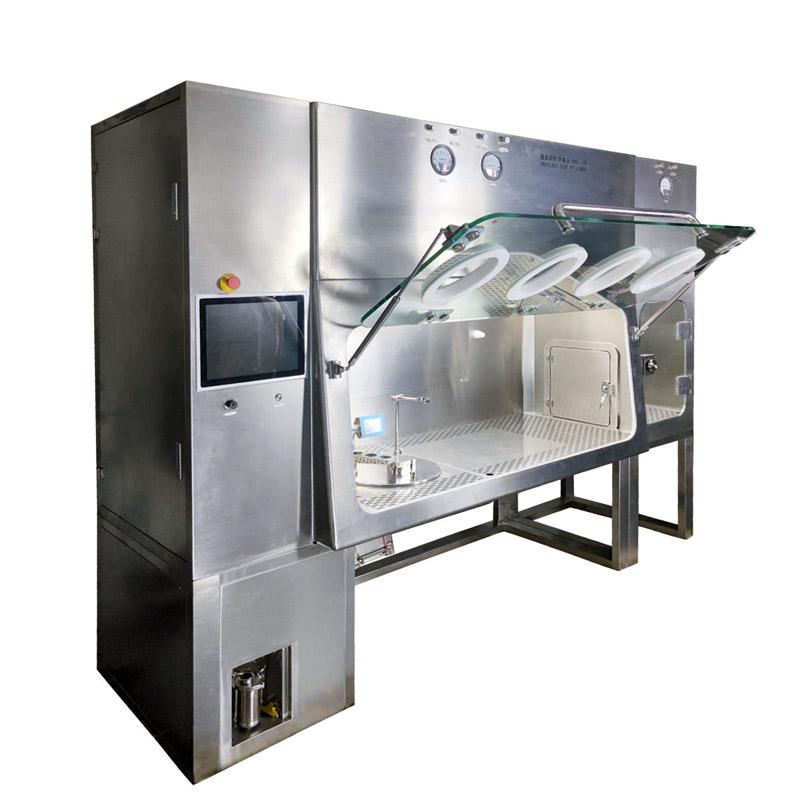
Sterility Testing Isolator Operation and Workflow
The operation of Sterility Testing Isolators involves specific procedures and workflows to maintain aseptic conditions. Let’s explore the typical operation and workflow within these isolators:
Entry and Exit Procedures
Before entering the isolator, operators must follow strict gowning and decontamination procedures to minimize the introduction of contaminants. This typically includes wearing appropriate personal protective equipment (PPE), such as gowns, gloves, and face masks, and undergoing a thorough hand hygiene process.
Sample Handling and Transfer
Once inside the isolator, operators can handle and transfer samples using the glove ports and gloves. Care must be taken to avoid cross-contamination between different samples. Tools and equipment used within the isolator should be properly cleaned and sterilized to maintain the sterility of the testing environment.
Monitoring and Control Systems
Sterility Testing Isolators are equipped with monitoring and control systems to ensure optimal performance and safety. These systems may include sensors for measuring parameters such as temperature, humidity, and pressure inside the isolator. Additionally, control panels allow operators to adjust settings and maintain the desired conditions throughout the testing process.
Compliance with Regulatory Standards
Sterility testing is a critical step in ensuring the safety and efficacy of pharmaceutical products, medical devices, and other materials. Therefore, it is essential for Sterility Testing Isolators to comply with regulatory standards. Some of the key standards and guidelines include:
FDA Guidelines for Sterility Testing
The U.S. Food and Drug Administration (FDA) provides guidelines and recommendations for sterility testing of pharmaceutical products. Sterility Testing Isolators must adhere to these guidelines to ensure compliance and the production of accurate and reliable test results.
ISO Standards for Cleanrooms and Isolators
The International Organization for Standardization (ISO) has established standards for cleanrooms and isolators, including ISO 14644 and ISO 14698. These standards define cleanliness requirements, particle limits, and procedures for testing and monitoring cleanroom environments. Sterility Testing Isolators should be designed and operated in accordance with these standards to maintain aseptic conditions.
GMP Requirements
Good Manufacturing Practice (GMP) guidelines outline the principles and procedures that ensure pharmaceutical products are consistently produced and controlled according to quality standards. Sterility Testing Isolators must comply with GMP requirements to ensure the reliability and integrity of the testing process.
Benefits of Using Sterility Testing Isolators
Using Sterility Testing Isolators offers several benefits for cleanroom environments and testing processes. Let’s explore some of these benefits:
Enhanced Product Safety and Quality
By providing a controlled and sterile testing environment, Sterility Testing Isolators minimize the risk of contamination, ensuring the safety and quality of pharmaceutical products, medical devices, and other materials. Accurate and reliable testing results contribute to the overall integrity of the products and help maintain consumer confidence.
Increased Operator Productivity
Sterility Testing Isolators offer ergonomic design features that improve operator comfort and efficiency. The availability of glove ports, adjustable workstations, and proper lighting systems enhance the overall workflow, allowing operators to perform testing tasks with ease. This increased productivity can positively impact the efficiency of testing processes.
Cost Savings and Operational Efficiency
By reducing the risk of contamination and false results, Sterility Testing Isolators contribute to cost savings in the long run. Minimizing the need for retesting and preventing product recalls due to contamination issues can significantly reduce financial losses. Additionally, the efficient workflow and optimized use of resources within the isolators contribute to overall operational efficiency.
Applications of Sterility Testing Isolators
Sterility Testing Isolators find applications in various industries where maintaining sterility is crucial. Some of the key industries include:
Pharmaceutical Industry
In the pharmaceutical industry, Sterility Testing Isolators are used during the quality control and release testing of sterile drug products. These isolators provide a controlled environment for testing the sterility of injectable drugs, ophthalmic products, and other sterile formulations.
Biotechnology and Cell Culture
Sterility Testing Isolators play a crucial role in the biotechnology industry, particularly during cell culture and fermentation processes. These isolators provide a sterile environment for handling and testing cell lines, ensuring the integrity and safety of biological products.
Medical Device Manufacturing
Sterility Testing Isolators are essential in the testing and validation of medical devices that come into contact with the human body. These isolators enable manufacturers to assess the sterility of implants, surgical instruments, and other medical devices, ensuring that they meet the necessary quality and safety standards.
Choosing the Right Sterility Testing Isolator
When selecting a Sterility Testing Isolator for your specific needs, several factors should be considered:
Evaluating Specific Needs and Requirements
Different industries and applications have unique requirements for sterility testing. Consider factors such as the types of samples being tested, testing volume, and specific environmental conditions. Understanding your specific needs will help in selecting an isolator that meets those requirements.
Considering Workflow and Ergonomics
Efficient workflow and operator ergonomics are essential for product testing processes. Look for isolators that offer customizable workstations, easy access to samples, and intuitive controls. Ensuring operator comfort and ease of use will enhance overall productivity.
Customization Options and Support
Sterility Testing Isolators should be customizable to meet your specific requirements. Look for manufacturers who offer customization options, such as size, configuration, and additional features. Additionally, consider the availability of technical support and maintenance services to ensure optimal performance and longevity of the isolator.
FAQs:
What are Sterility Testing Isolators?
Sterility Testing Isolators are specialized enclosures that provide a controlled and sterile environment for testing the sterility of pharmaceutical products, medical devices, and other critical materials. They minimize contamination risks and ensure accurate testing results.
How do Sterility Testing Isolators minimize contamination risks?
Sterility Testing Isolators minimize contamination risks by creating a physical barrier between the operator and the sample, preventing potential contamination. They utilize high-efficiency particulate air (HEPA) filters to remove airborne particles and maintain a clean and sterile testing environment.
What are the key components of Sterility Testing Isolators?
Key components of Sterility Testing Isolators include glove ports and gloves for sample handling, HEPA filters for air filtration, lighting systems for visibility, and gas supply systems for specific testing requirements.
How do Sterility Testing Isolators protect operators and samples?
Sterility Testing Isolators protect operators by providing a physical barrier between them and the samples, minimizing the risk of exposure to hazardous substances. They also prevent cross-contamination between different samples being tested, ensuring the integrity of the testing process.
Do Sterility Testing Isolators comply with regulatory standards?
Yes, Sterility Testing Isolators comply with regulatory standards such as FDA guidelines for sterility testing, ISO standards for cleanrooms and isolators, and GMP requirements. Compliance with these standards ensures the reliability and integrity of the testing process.
Can Sterility Testing Isolators be customized?
Yes, Sterility Testing Isolators can be customized to meet specific requirements. They can be tailored in terms of size, configuration, and additional features to accommodate different testing needs and workflows.
What industries can benefit from using Sterility Testing Isolators?
Industries such as pharmaceuticals, biotechnology, and medical device manufacturing can benefit from using Sterility Testing Isolators. These isolators are essential for ensuring the sterility and safety of products in these sectors.
How do Sterility Testing Isolators contribute to cost savings?
Sterility Testing Isolators contribute to cost savings by reducing the risk of contamination and false results. Minimizing the need for retesting and preventing product recalls due to contamination issues can significantly reduce financial losses in the long run.
What are the advantages of using Sterility Testing Isolators in cleanroom environments?
The advantages of using Sterility Testing Isolators include enhanced product safety and quality, increased operator productivity, and cost savings through operational efficiency. These isolators create a controlled environment that ensures accurate testing results.
Can Sterility Testing Isolators accommodate different sample types?
Yes, Sterility Testing Isolators can accommodate different sample types. They are designed to handle a variety of materials, including pharmaceutical products, medical devices, and biological samples used in biotechnology applications.
Are Sterility Testing Isolators Easy to Maintain?
Sterility Testing Isolators are designed for ease of maintenance. The materials used in their construction, such as stainless steel or high-grade plastics, are easy to clean and resistant to corrosion. Regular maintenance and adherence to recommended cleaning procedures help ensure optimal performance.
How do Sterility Testing Isolators contribute to the overall integrity of products?
Sterility Testing Isolators contribute to the overall integrity of products by providing a controlled and sterile environment for testing. Accurate and reliable testing results obtained within the isolator ensure that the products meet the necessary quality and safety standards. This instills confidence in the end-users, as they can trust that the tested products are free from contamination and safe for use.
Remember, when choosing Sterility Testing Isolators, it’s essential to evaluate your specific needs and requirements, consider workflow and ergonomics, and ensure compliance with regulatory standards. By selecting the right isolator and implementing proper operating procedures, you can effectively maintain sterility and achieve reliable testing results.
If you have any further questions or require additional information about Sterility Testing Isolators, feel free to reach out to YOUTH, the leading provider of cleanroom solutions. Our team of experts is always ready to assist you in finding the best solution for your sterility testing needs.
Related Contents:
- Bag-In/Bag-Out (BIBO) Systems: Operation and Maintenance Guide
- Ensuring Ultimate Sterility: The Power of YOUTH’s Sterility Test Isolators
- Ensuring Ultimate Sterility: The Power of YOUTH’s Sterility Test Isolators
- What is the Difference Between Barrier and Isolator?
- What is the Main Advantage of Using Either RABS or a Barrier Isolator?
- Aseptic Processing: Isolators or RABS?
- What is the Difference Between RABS and Isolator?
- RABS vs. Isolator – Choosing the Right Isolation Technology for Your Project
- Ultimate Guide to VHP Passbox Cleaning in Controlled Environments

























